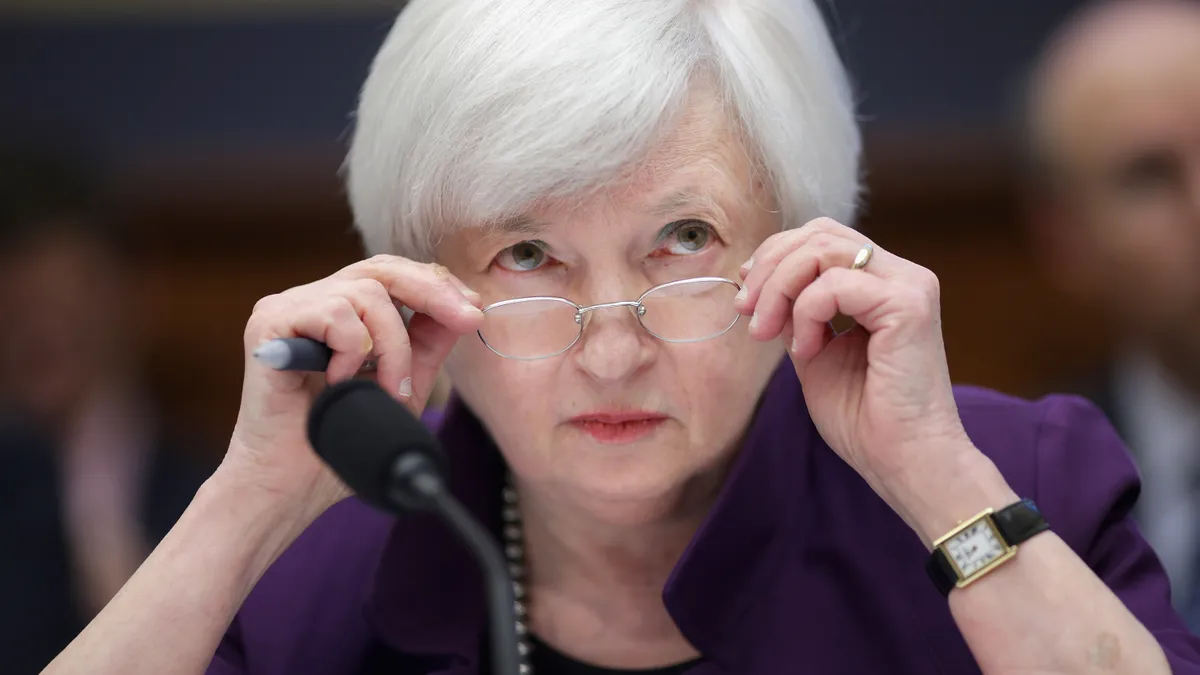The design and engineering challenges inherent in developing a U.S. central bank digital currency (CBDC) will take years to address, not months, Treasury Secretary Janet Yellen said Thursday at American University in Washington.
The event marked the first time Yellen has publicly laid out her views on digital assets since President Joe Biden issued an executive order last month outlining the administration’s priorities in "harnessing the potential benefits" of the emerging technologies.
"I share the president’s urgency in pulling forward research to understand the challenges and opportunities a CBDC could present to American interests," Yellen said Thursday. "As we consider these big choices, we must also remember that technology-driven financial innovation is inherently cross-border and requires international cooperation."
The Treasury Department will be working alongside White House officials and other agencies over the next six months on reports that incorporate recommendations tied to the order’s objectives, Yellen said.
In that vein, Yellen said Thursday she was guided by five central "lessons" meant to balance innovation with risk:
- The financial system benefits from responsible innovation.
- The most vulnerable populations are hurt the most when regulation doesn’t keep up with innovation.
- Regulation should be based on risks and activities rather than technologies.
- The U.S. benefits from the dollar’s central role in global finance.
- Policymakers, businesspeople, advocates, scholars, inventors and citizens need to work together to ensure innovation is responsible.
To innovation’s favor, "many transactions still take too long to settle," Yellen said, citing that Americans — disproportionately those in lower income brackets — spend roughly $15 billion each year on services such as check cashing and payday loans to cover time-based inefficiencies.
Digital-asset advocates promote a vision wherein transactions will be instantaneous and cross-border payment costs low regardless of where the transfer take place or who is involved, Yellen said, but "processing time, cost, and technological barriers to access will need to be overcome."
To that end, the Federal Reserve’s FedNow system, a real-time payments platform slated to launch next year, could deliver a solution in the U.S., Yellen said.
As technologies emerge, policymakers, regulators and companies must stay ready for changes to the structure of financial markets, Yellen said.
"Some have suggested that distributed ledger technology could reduce concentration in financial markets," she said. "While this could make markets less vulnerable to the failure of any particular firm, it is critical to ensure we maintain visibility into potential build-ups of systemic risk and continue to have effective tools for tamping down excesses where they arise."
Regulation should also be "tech neutral," Yellen said.
"Consumers, investors and businesses should be protected from fraud and misleading statements regardless of whether assets are stored on a balance sheet or distributed ledger," she said. "Similarly, firms that hold customer assets should be required to ensure those assets are not lost, stolen, or used without the customer’s permission."
Yellen’s personal position toward digital assets has appeared to soften in recent years. She called herself "not a fan" of cryptocurrency in 2018, according to American Banker, but said last month she had "a little bit of skepticism" toward digital assets.
The treasury secretary is not the only public official to detail her must-haves in a CBDC. Fed Chair Jerome Powell last month said a U.S. digital dollar would need to ensure user privacy, be "identity verifiable," be "intermediated" and be widely accepted as a means of payment. The central bank's Boston satellite published a white paper in February, detailing the first phase of its research into a CBDC. Weeks earlier, the Fed issued a draft paper on CBDCs that was meant to solicit public comments, but the report made no policy recommendations.
Yellen, in her comments Thursday, touched on stablecoins — digital assets pegged to the dollar at a one-to-one value. She said the Treasury Department has worked with the President’s Working Group on Financial Markets (PWG), the Federal Deposit Insurance Corp. and the Office of the Comptroller of the Currency to study them — and that the PWG is working with Congress on legislation meant to ensure stablecoins are risk-resilient, and working globally to make regulation and supervision consistent.














